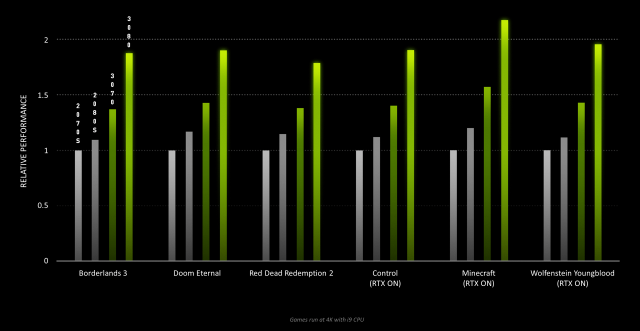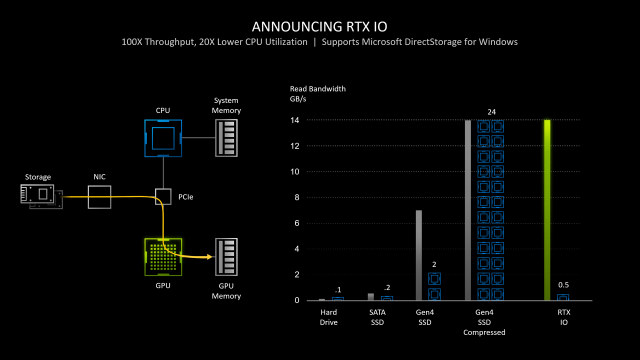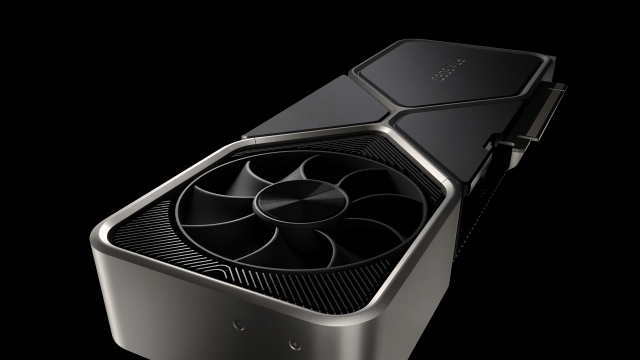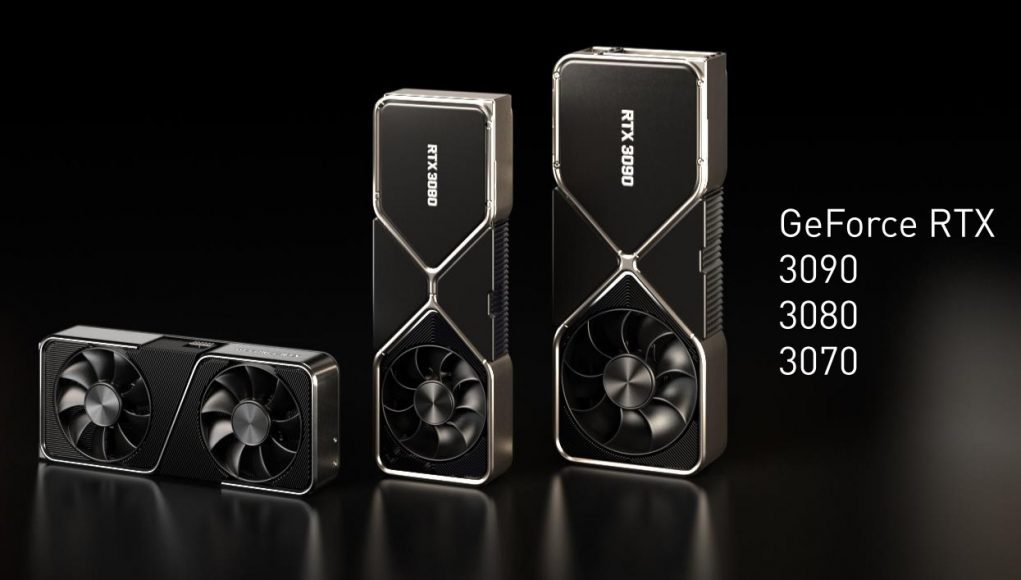NVIDIA announced its latest GPUs, the GeForce RTX 30-series, based on its ‘Ampere’ architecture. The company revealed the price and release date for the RTX 3070, 3080, and 3090, with the first of the cards launching in just two weeks.
In a pre-recorded presentation streamed today, Nvidia revealed the GeForce RTX 3070, 3080, and 3090 GPUs based on its latest ‘Ampere’ architecture. Before we dive into details, here’s the release date, price, and basic specs for the ‘Founder’s Edition’ of each card:
| RTX 3090 | RTX 3080 | RTX 3070 | |
| Price | $1,500 | $700 | $500 |
| Release Date | September 24th | September 17th | October |
| CUDA Cores | 10,496 | 8,704 | 5,888 |
| Boost Clock (GHz) | 1.7 | 1.71 | 1.73 |
| Memory | 24GB (GDDR6X) | 10GB (GDDR6X) | 8GB (GDDR6) |
| Connectors | 1x HDMI 2.1, 3x DisplayPort 1.4a | ||
Succeeding the ‘Turing’ architecture of the prior generation, ‘Ampere’ aims to deliver more performance across three pillars: shading, ray tracing (RTX), and AI (DLSS). The company claims the new graphics cards represent the “greatest generational leap” in performance from one series of Nvidia GPUs to the next.

For games that make use of those features, Nvidia claims up to 2x performance and 1.9x power efficiency between 20-series and 30-series cards. For games that don’t use features like raytracing, the gains don’t quite reach 2x performance, but still offer a nice jump, according to the company.
Nvidia also announced ‘RTX IO’ a new accelerated storage pipeline designed to offload game asset data decompression from the CPU to the GPU, accelerating performance by “up to 100x compared with hard drives and traditional storage APIs.”
“When used with Microsoft’s new DirectStorage for Windows API, RTX IO offloads dozens of CPU cores’ worth of work to your GeForce RTX GPU, improving frame rates, enabling near-instantaneous game loading, and opening the door to a new era of large, incredibly detailed open world games,” the company says.

RTX IO will require an NVMe SSD and an RTX GPU (as far as we understand, this includes existing 20-series cards as well as the upcoming 30-series).

While the first wave of the prior RTX 20-series GPUs included USB-C ports with support for the VirtualLink standard, so far it looks like the first wave of RTX 30-series will eschew a USB-C port. Whether the piping is there for third-party manufacturers to add USB-C ports (and therefore VirtualLink support), isn’t clear at this time but we’ve reached out to Nvidia for clarification.
The company also introduced a new technology called Nvidia Reflex which aims to reduce game latency. The feature needs to be specifically built into applications, but Nvidia says “by integrating directly with the game, Reflex Low Latency Mode aligns game engine work to complete just-in-time for rendering, eliminating the GPU render queue and reducing CPU back pressure in GPU intensive scenes. This delivers latency reductions above and beyond existing driver-only techniques, such as NVIDIA Ultra Low Latency Mode.”
While the company is highlighting Reflex’s ability to reduce latency for competitive non-VR esports games, it said in a comment on its site that “in theory, it could improve latency in VR games, however we have not tested it.” We’ve reached out for more details.







